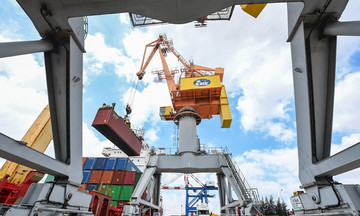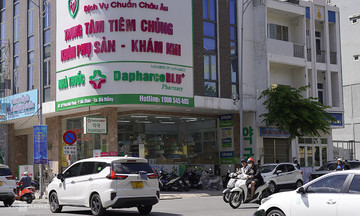In the food and beverage industry, accuracy is a must. Goods must move quickly and safely from farms to processing plants, through cold storage, distribution centers, and then to retailers and restaurants. Businesses spend millions of USD to optimize transportation, warehousing, and inventory management, but yards – the link connecting transportation and warehouses – are often overlooked.
Behind every distribution center or factory is a yard that coordinates the flow of trailers, tractors, and goods. When managed effectively, the yard becomes a strategic bridge, but if neglected, it causes congestion, delays, and increased costs. Many businesses still remain at the initial stage of traditional yard management, considering it merely a series of reactive tasks such as entry and exit procedures, directing vehicles into docks, and preventing congestion.
The signs of this model are easily recognizable: manual gate operations or through single applications, contracted dispatch services from multiple discrete providers, trailer tracking using handwritten boards or standalone software, and dock schedules arranged based on urgency. This approach maintains daily operations but does not address major challenges, especially when managing perishable goods or ensuring on-time and in-full (OTIF) deliveries.
The lack of network-wide visibility and standardization leads to extended trailer waiting times, product spoilage due to delays or incorrect temperatures, congestion and penalties at docks, wasted manpower and tractors, safety and compliance risks, and inconsistent service quality. The reason is the fragmented and outdated yard model.
 |
Two employees discuss work at the yard, before vehicles depart. Photo: Yevhen AdobeStock |
Two employees discuss work at the yard, before vehicles depart. Photo: Yevhen AdobeStock
The solution is optimization with a yard operating system (YOS). This is a comprehensive framework combining people, processes, assets, and technology, creating a unified model for the entire network. Unlike traditional yard management systems (YMS) that focus on a single point, YOS allows network-wide visibility, establishes performance accountability, and drives continuous improvement.
YOS offers many benefits. First, the system provides real-time visibility when integrated with transportation management systems (TMS), warehouse management systems (WMS), and YMS. This helps track trailer status, gate and tractor activity, bottlenecks, waiting times, and equipment utilization – factors that are especially important for cold chain supply chains. Second, YOS supports standardized processes and key performance indicators (KPIs) to unify gate, yard, and dock operations. Typical KPIs include trailer turnaround time and gate throughput, thereby ensuring consistent service and food safety compliance.
Third, the system helps optimize manpower and equipment through dynamic dispatch based on actual demand. At the same time, YOS establishes predictive scheduling based on traffic patterns and utilizes electric tractors to reduce emissions and costs. Fourth, YOS brings performance transparency through real-time data, allowing for tracking discrepancies between facilities and applying continuous improvements. Finally, YOS seamlessly connects with transportation and warehousing, helping to coordinate arrival schedules, accelerate loading and unloading, reduce dock fees, improve OTIF metrics, and maintain product freshness.
However, YOS implementation still faces many obstacles. The dispersed provider model leads to inconsistent operating standards, the discrete technology of traditional YMS limits management scope, many service purchasing decisions are based solely on price rather than long-term value, and there is a reluctance to change due to concerns about switching providers, system integration, and staff retraining.
In the context of increasingly complex distribution networks and ever-increasing customer demands, businesses cannot consider the yard as a secondary task. YOS can transform the yard from a "blind spot" into a strategic lever, enhancing speed, safety, compliance, and cost optimization. Pioneering units are consolidating yard operations under a single provider, deploying specialized YOS for the food and beverage industry, leveraging real-time data to shorten dock turnaround times, reduce waiting times, and prevent product spoilage, while also pursuing environmental, social, and governance (ESG) goals with electric vehicles, emissions tracking, and improved equipment efficiency.
Hai My (Food Logistics)












